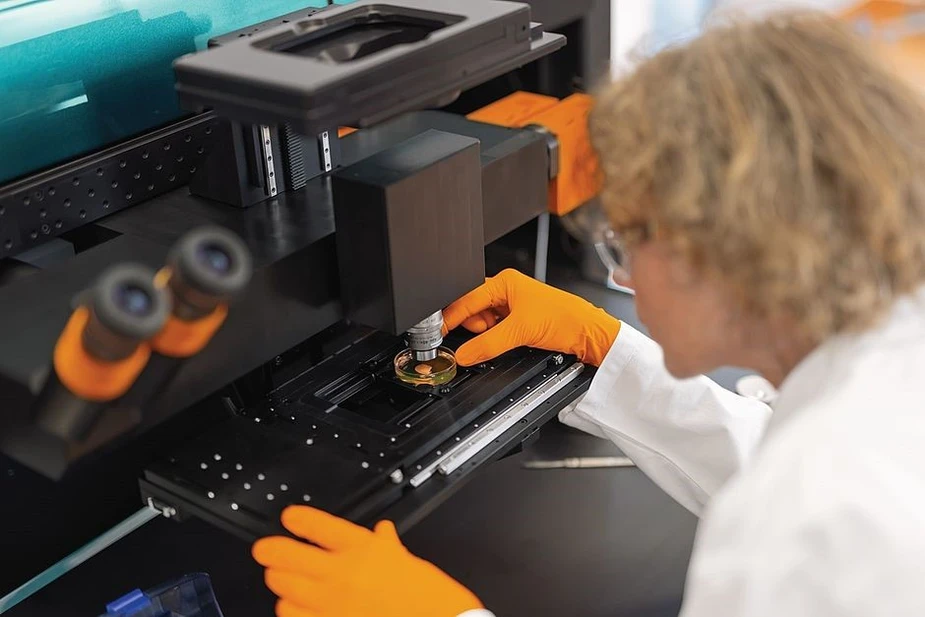Multi-million-Euro funding for two collaborative quantum technology projects
HU Berlin, German Aerospace Center, Ferdinand-Braun-Institut, and IRIS Adlershof are involved in the projects
Quantum technologies promise a variety of completely new applications. In addition to quantum computers, quantum sensing and quantum communication are among the areas of quantum technology in which the first, also commercially successful product developments are expected. The Federal Ministry of Education and Research is now funding Humboldt University Berlin (HU) in two new collaborative projects in the field of quantum technologies.
Project QEED
The first funded project, QEED, deals with quantum sensing with entangled photons - for applications in medical research and cancer diagnostics. Funded as a BMBF "Lighthouse Project" for 5 years (project volume 11.9 million euros, HUB 1.7 million euros) the collaboration will jointly develop a very powerful microscope that can work in the mid-infrared (MIR). In order to transfer measurement information from the clinically relevant MIR to the near infrared (NIR), which can be detected particularly fast and with low noise, a novel, spectrally resolving imaging method based on entangled photon pairs will be used.
In the "Nonlinear Quantum Optics" group at HU and IRIS Adlershof, led by Dr. Sven Ramelow, who also serves as scientific director of the overall collaboration, high-performance quantum interferometer modules are being developed and the quantum sensing measurement techniques underlying the collaborative project are being optimized. The core innovation here is the significant increase in the rate of generated entangled photon pairs, as well as the significant extension of the MIR measurement range compared to the state-of-the-art.
Among the total of ten project partners are five research institutions – including three from Berlin: FBH Berlin, Charité Berlin, and HU Berlin. Also five corporate partners are part of the team and will, in addition to their work in the project, after project completion promote a commercialization of the microscope and its components. The project officially started on January 1, 2023.
Project MIHQU
The second funded collaborative project named "High Performance Light Sources for Quantum Communication" MIHQU (project volume 5.3 million Euro, HUB 1.4 million Euro) is about quantum communication – an important building block for the future security of digital infrastructures in our society. In quantum communication, the exchange of cryptographic keys is based on the laws of physics, which means that security, in contrast to currently used encryption, remains fundamentally guaranteed – even in the event of attacks by novel, previously unknown algorithms or by powerful quantum computers.
The goal of the project is to miniaturize sources for photon pairs in such a way that their reproducible industrial production can be established in small series. At Humboldt-Universität, the group "Nonlinear Quantum Optics" is mainly working on the development of functional models of the sources as a basis for the subsequent integration.
In addition to HU (Dr. Sven Ramelow with his group "Nonlinear Quantum Optics"), the in total five collaborative partners include the German Aerospace Center e.V., Berlin, with the group of Prof. Janik Wolters, who will coordinate the project, as well as the Technical University of Berlin, and two industry partners – son-x GmbH, Aachen, and AIXEMTEC GmbH, Herzogenrath. The project officially started on March 1, 2023.
Further information:
- Project profile QEED: www.quantentechnologien.de/forschung/foerderung/leuchtturmprojekte-der-quantenbasierten-messtechnik/qeed.html (in German)
- Project profile MIHQU: www.forschung-it-sicherheit-kommunikationssysteme.de/projekte/mihqu (in German)
Contact:
Dr. Sven Ramelow
Head of the group "Nonlinear Quantum Optics" at the Institute of Physics of the Humboldt-Universität
and IRIS Adlershof
+49 30 2093-7799
sven.ramelow(at)physik.hu-berlin.de
www.physik.hu-berlin.de/en/niqo
Press release HU Berlin, 20 March 2023
